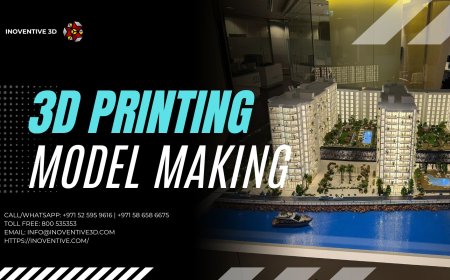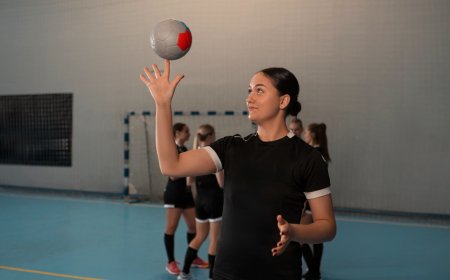Backstroke Swimming Drills: Training Tips for Backstroke Swimmers
Improve your backstroke swimming with effective drills and techniques. Enhance your body position, arm movement, flutter kicks, and breathing patterns to boost your performance, efficiency, and confidence in the water.

Want to improve your backstroke technique? Backstroke drills are important for boosting your performance, efficiency, and confidence in the water. Learning the backstroke can make a big difference whether you're a competitive swimmer, a teacher who wants to help others do well, or someone who wants to improve their skills. This article will show several drills, strategies, and useful ideas that will help you improve your backstroke. For more tips and insights, check out Swim Fit.
From improving body positioning and kick strength to developing a smoother arm pull and effective breathing rhythm, these drills are designed to build strength, boost speed, and make your stroke more streamlined and effective. Dive in and take your backstroke to the next level with the right swim gear!!
Understanding Backstroke Fundamentals
Before you can improve your swimming talents, you need to have a good grasp of the foundations of the backstroke. Mastering these fundamentals will set the foundation for improving speed, efficiency, and endurance in the water.
Backstroke Technique
A strong backstroke relies on proper technique. Let's break it down into the key components:
-
Body Position: As close to the water's top as you can, keep your body flat. When you keep your body in a streamlined stance, you reduce drag and glide more smoothly. Sitting down or squatting down too much will make the exercise harder. Practising core engagement can help maintain your body in line and steady.
-
Arm Movement: Making smooth, rhythmic arm moves is important. Always switch arms. One arm should move straight and relaxed above the water while the other pulls beneath to move you forward. Pay attention to a strong, wide pull, and make sure your pinky goes into the water before your other fingers to cut down on splashing and drag. Don't rush your arm motions; keep a steady and regulated pace.
-
Head Alignment: Keep your head still and look straight up with your face. Keeping your head motionless helps keep your body in the right position and reduces pressure on your neck. To keep your form from worsening, relax your neck and shoulders to avoid further tension.
-
Torso Rotation: Rotating your torso with every stroke is crucial for efficient backstroke technique. This rotation minimises water resistance, helping you engage your core muscles in a supple twist, allowing for a more natural arm reach during each glide. Picture your whole body revolving around an invisible pivot, with shoulders and hips aligned to generate a seamless, flowing motion.
Next, focus on constant practice on internalising these fundamentals to cultivate somatic awareness. Whether just starting or an experienced swimmer, honing these nuanced movements will help you slice through the water more smoothly and powerfully, with balanced rotation consciously linking each limb in a fluid, full-bodied drive.
Breathing Techniques
Unlike other strokes, breathing while backstroking is simpler as your face stays above water. Focus on establishing a rhythmic breathing pattern that syncs with your strokes to maximise efficiency.
Avoiding Common Errors
Here are some common mistakes new swimmers often make with backstroke and how to avoid them:
-
Low Body Position: Many newcomers struggle with maintaining a high body position in backstroke, floating too low in the water and creating unnecessary drag on their movement. Focusing on engaging your core muscles and lifting your chest and hips closer to the water's surface will help you adopt a more streamlined form and glide through the water with improved efficiency and less exertion.
-
Arm Recovery Issues: Inexperienced swimmers frequently battle issues with arm recovery, either allowing their arms to sweep too widely out of the water or retaining them too tightly against their body. Not only does this impact their effectiveness, but it can disrupt their rhythm too. Visualising each arm tracing a straight and consistent path back over the water with your pinky finger leading the way as it re-enters will foster more controlled and rhythmic strokes.
-
Poor Turn Navigation: Newcomers often have trouble figuring out how to turn smoothly while turning around in backstroke. If you don't time your approach well, you could make awkward or incomplete turns that slow you down. Using the backstroke flags as markers to figure out where you are and practice counting your strokes will help you make smooth turns that don't slow you down.
Building Endurance and Enhancing Speed
To improve your backstroke performance, you must plan your workouts and do drills and routines focusing on technique, endurance, and strength. Adding these particular workouts to your training can make you more powerful and efficient in the water.
Endurance-Building Drills
-
Streamline & Flutter Kick Drills: Push off the wall in a fully streamlined position, keeping your arms tight and your head aligned with your body. Maintain a steady flutter kick to cover longer distances without losing form. This drill builds leg stamina and helps improve your body alignment and streamline efficiency in the water.
-
IM Order Sets: Add backstroke to your IM practice sessions. Do the IM order repeatedly (butterfly, backstroke, breaststroke, freestyle), working on good backstroke form during the backstroke part. This helps you get better at swimming by building endurance, making your strokes more consistent, and adding diversity to your workouts.
Increasing Stroke Rate
Do drills that count strokes to improve your efficiency while correcting your form. Lessen the number of strokes you do each lap over time to make your stroke smoother and more efficient.
Interval Training for Speed
Create structured training sets to simulate competitive conditions, for instance:
-
Swim 10 x 50-yard backstrokes with 30 seconds of rest between each, alternating between steady pacing and maximum-speed sprints.
Improving Stroke Technique
Small changes can make a big difference in how well you do. Here are some suggestions for fine-tuning:
-
Make Your Pull Perfect: Use a high elbow catch to get the most propulsion during the pull phase. This will work your lats and shoulders well, giving you more power with less effort.
-
Leverage Backstroke Flags: These help swimmers find their way during races or practice. Use them to keep track of your strokes so you can turn more smoothly and with more confidence.
Track Your Progress
Keeping track of your overall training enables you to measure improvement over time. Record your total swimming distances and times for specific drills or sets. Regularly comparing these results to personal benchmarks or team averages will help you identify areas to focus on and set realistic performance goals.
Strengthening for Backstroke
Strength is just as vital as technique when mastering the backstroke. Incorporate dryland exercises into your routine to improve your physical conditioning.
Core Exercises
A strong core contributes to stability and posture. Try these:
-
Glute Bridges: Improve hip alignment and power.
-
Russian Twists: Enhance rotational mobility.
-
Hollow Holds: Reinforce a streamlined swimming position.
Lower Body Strength
Leg strength is crucial for backstroke propulsion. Add these to your workouts:
-
Dryland Flutter Kicks: Mimic in-water movements.
-
Box Jumps: Build explosive strength.
Upper Body Conditioning
Strong arms and shoulders enhance stroke power. Focus on:
-
Pull-ups & Shoulder Presses: Build functional upper-body strength.
Explosive Power Training
Generate momentum with exercises like burpees and medicine ball slams. Alternating between weighted and bodyweight exercises helps develop functional strength without risking overdevelopment in specific areas.
Utilising Virtual Training Resources
Virtual tools make it easier than ever to refine your backstroke technique. Many platforms offer tailored workouts, step-by-step instructions, and video demonstrations catered to swimmers of all levels.
Online Training Programs
Explore apps and websites offering curated backstroke training programs. These include visual guides, expert tips, and progress tracking to optimise results.
Engaging with Coaches Online
Consider partnering with experienced swim coaches through platforms like SwimSmooth, where you can receive personalised feedback and structured training plans.
Video Tutorials
Online swimming tutorials break down effective backstroke techniques step by step, providing valuable insights for people at any skill level.
Elevate Your Backstroke
To excel at backstroke swimming, focus on refining your technique, building strength, and adopting innovative training methods. These strategies will set you up for success, whether you are aiming to improve personal performance or compete on a larger stage.







































